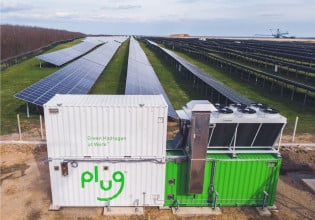Researchers Showcase Perovskite Solar Cells Exceeding 25% Power-conversion Efficiency
A team of researchers led by the École Polytechnique fédérale de Lausanne (EPFL) have made a new discovery that could greatly increase the power-conversion capabilities of perovskite solar cells.
The new approach could potentially transform many applications, including photovoltaic panels, LED lights, lasers, and photodetectors. The results of the research were first published in the scientific journal Nature.
Perovskite Materials: an Overview
The term perovskite typically refers to a calcium titanium oxide mineral composed of calcium titanate (CaTiO3).
However, all those compounds that have the same type of crystal structure as CaTiO3 are also called perovskites.
Because of their chemical structure, perovskites allow the embedding on various cations and are therefore widely utilized to enable the development of diverse engineered materials.
Recent research utilizing this material has led to the creation of perovskite solar cells (PSC), which have been proved to be able to harvest more solar energy than traditionally-built solar cells.
PSCs electrical devices are composed of a perovskite-structured compound - mostly a hybrid organic-inorganic lead or tin halide-based material - used as the light-harvesting active layer.
The EPFL-led team is now pushing the boundaries of PSCs’ efficiency further, particularly metal-halide perovskites.
Improving Solar Cells Efficiency
Among metal halide perovskites, one of the most used for photovoltaic applications is formamidinium lead triiodide (FAPbI3), which has shown the highest potential for solar cells’ efficiency.
Now, thanks to a new anion engineering concept, the EPFL-led group of scientists managed to substantially amplify the performance of FAPbI3.
From a technical standpoint, the concept uses the pseudo-halide anion formate (HCOO−) to augment the crystallinity of the films by eliminating defects that are present at grain boundaries and at the surface of the perovskite films.
The resulting solar cell devices can achieve a power conversion efficiency of 25.6 percent (certified 25.2 percent).
They also feature long-term operational stability of 450 hours and show intense electroluminescence with external quantum efficiencies (the ratio of extracted free charge carriers to incident photons) of more than 10 percent.
For context, the most efficient, commercialized solar panels today offer a power-conversion efficiency between 19% and 23%.
“Our findings provide a direct route to eliminate the most abundant and deleterious lattice defects present in metal halide perovskites, providing a facile access to solution-processable films with improved optoelectronic performance,” the scientists wrote.
The FAPbI3’s film fabrication procedure. Image used courtesy of Nature.
Led by Scientific Excellence
Led by Professor Michael Grätzel at EPFL’s School of Basic Sciences, the team behind the new research saw a number of technical and scientific contributions.
In particular, the new paper was the result of a collaboration between the Ulsan National Institute of Science and Technology (UNIST), the Korea Institute of Energy Research (KIER), the Chinese Academy of Sciences, and Kyung Hee University.
EPFL’s own Laboratory of Computational Chemistry and Biochemistry, Laboratory of Magnetic Resonance, and Laboratory for Molecular Engineering of Optoelectronic Nanomaterials also contributed to the paper.
Given its international reach and potential for future applications, the project was funded by several institutions.
Highly luminescent and stable alpha-FAPbI3 perovskite via HCOO- anion engineering.Image courtesy of Jin Young Kim (UNIST).
The South Korean Ministry of Science, ICT & Future Planning was among them, together with UNIST, KIER, the Swiss National Science Foundation, the European Union’s Horizon 2020 research and innovation program, and King Abdulaziz City for Science and Technology (KACST).
For more information about the new paper, you can follow this link here.






